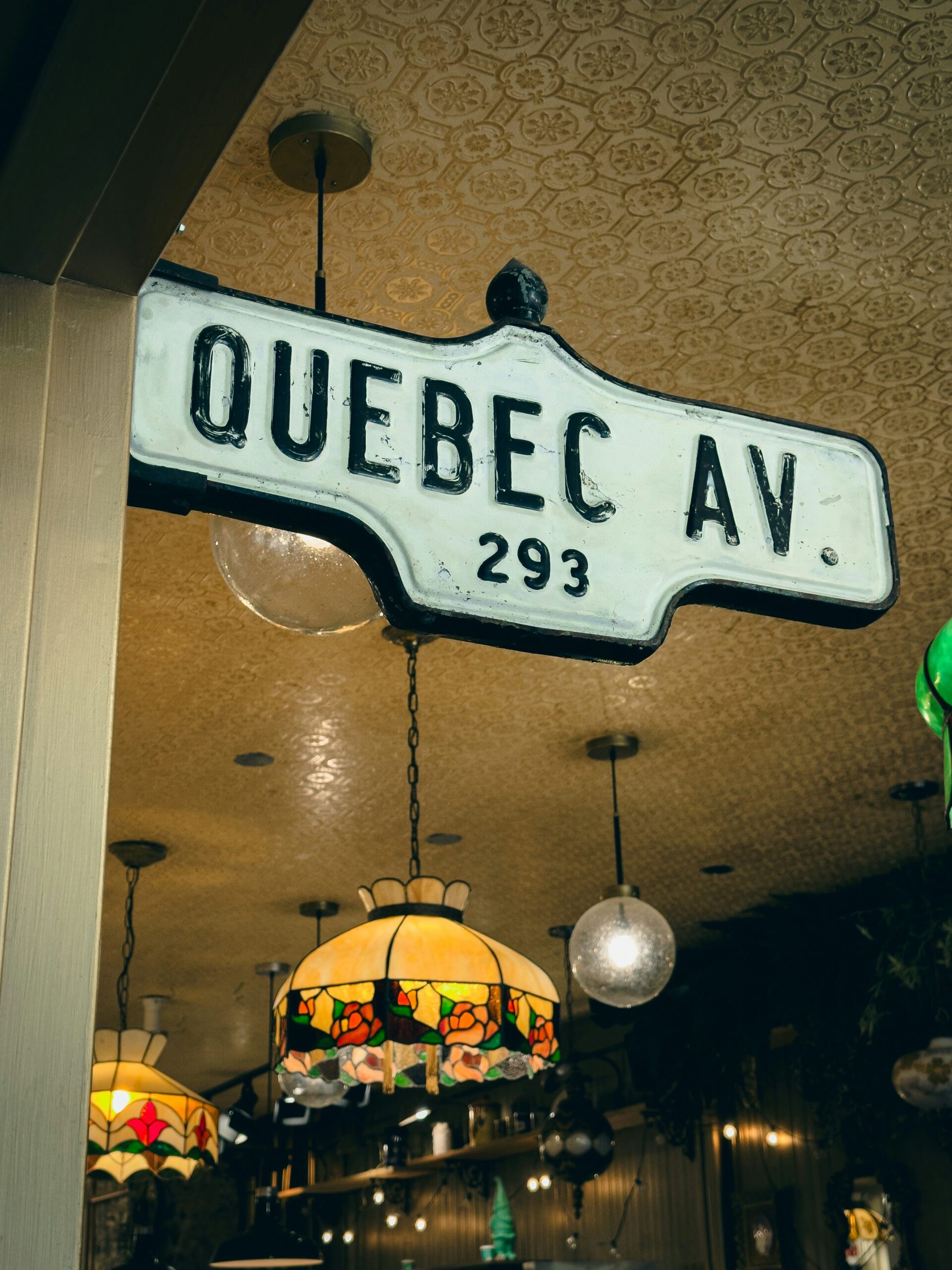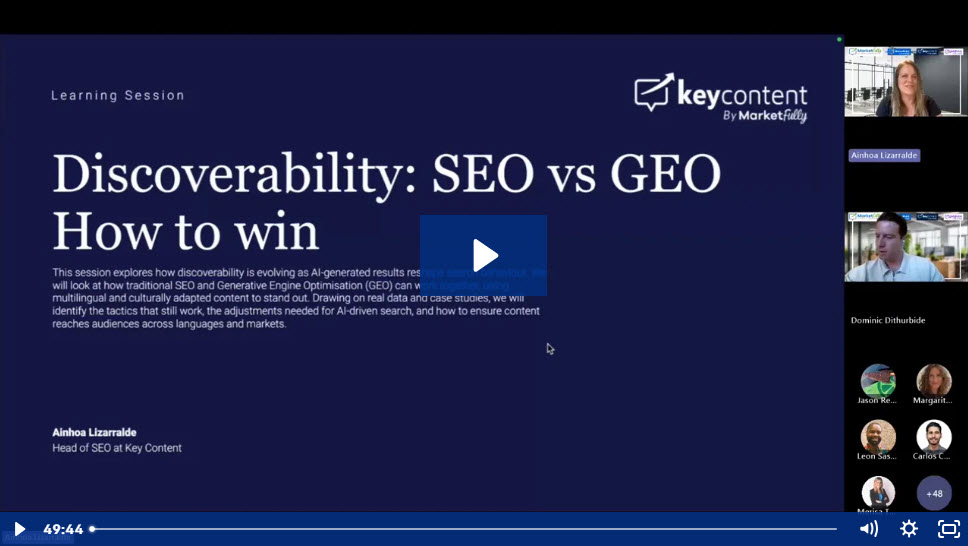Brands must navigate a tapestry of dialects and domains in today’s global marketplace if they hope to have any kind of foothold in the market.
Multi-regional and multilingual marketing are two sides of the same coin. One targets where you reach people, the other targets how you speak to them. E.g., a site that serves English speakers in Canada and French speakers in Canada is multilingual, while one that serves customers in both Canada and the United States (even in the same language) is multiregional.
Often, you need both approaches, like separate sites for English vs French sites, and separate sites for Canada vs US content. According to Google, a multilingual site offers content in more than one language (e.g. English and French), and a multi-regional site explicitly targets different countries. Many global brands do both simultaneously (USA vs Canada, each in English and French).
Multi-regional marketing means tailoring content and SEO to local market conditions, from currency and regulations to regional slang, even if the language is the same. Multilingual marketing makes sure you speak in your audience’s native tongue and cultural context. A well-structured international strategy effectively blends the two.
At Key Content, we often remind clients that effective global marketing goes beyond literal translation. Our team aim to preserve the essence of your message while adapting it to resonate with diverse cultures. In other words, to be successful, you need to reach people, and also communicate with them effectively.

hreflang, URLs, and geo-targeting and other technical SEO essentials
Getting the technical setup right is the backbone of both multi-regional and multilingual strategies. At the heart of this is hreflang, which are HTML tags or sitemap entries that tell search engines which version of a page to show each user. When implemented properly, hreflang guides Google to serve the page that matches the visitor’s language and location.
If it’s missing or incorrect, users may land on the “wrong” version of your site (e.g. a Canadian visiting the US site or an English speaker seeing French content), creating a poor experience. You should use ISO language-region codes (like en-US, fr-CA, etc.) in your hreflang tags and make sure each alternate link is reciprocal.
Your URL structure also conveys regional and language information. You can use country-code top-level domains (ccTLDs) like example.fr or example.ca to target France or Canada explicitly. These give a clear geo-signal, but they are costly and require separate SEO efforts. A common alternative is subdomains (fr.example.com) or subdirectories (example.com/fr/) for each language or region. Subdomains can be treated by Google as separate sites, meaning you rebuild authority; subdirectories are usually easiest to manage. Subdirectories “get a running start” because they inherit the root domain’s SEO value. In fact, SEO experts note that using subfolders for each market “ranks the fastest” and is preferred by many global sites. The downside is fewer visual cues for users (a .fr URL immediately signals France, whereas /fr/ looks like a generic site). Whatever you choose, be consistent and keep in line with your tag strategy.
Beyond URLs and tags, geo-targeting can be handled directly in Google Search Console. For a given site or subfolder, you can set a country target to boost rankings in that locale.
Alternatively, using separate country domains (ccTLDs) inherently geotargets you. In either case, you’ll typically combine geo-target signals with hreflang. For example, you might use example.com/fr-ca/ for Canadian French content and set the Search Console target to Canada, and use example.com/fr-fr/ for European French targeted at France. Google’s documentation advises: use locale-specific URLs or hreflang annotations so that each page clearly indicates its language and region. These practices ensure your site serves the correct version to each audience, improving relevance in local search.
Content localisation with keywords, tone, and compliance
Technical tags and URLs only pave the road. The content is what drives engagement, and true localisation means every element of your message must be carefully tailored.
Keywords and semantics
Don’t make the mistake of assuming a direct translation of your main-market keywords will work in another language or region, because in reality, each culture searches differently.
As an example, a U.S. shopper might search for “sneakers,” a Brit for “trainers,” and a Spaniard for “zapatillas de deporte”, and each term highlights different buying criteria (brand, comfort, price). Similarly, even variants of the same language can differ, like “fall” vs “autumn” in English, or Québec’s “courriel” vs France’s “email.”
Tone and idiom
One thing we have to remember is, language is cultural, and a literal translation might sound stiff or foreign when compared to locally created content. Localisation often uses transcreation (creative adaptation) to get a message across correctly, rather than a word-for-word translation. This might involve changing idioms, humour, or even rewriting slogans so they resonate locally. For example, a brand tagline like “Just do it” may need a fresh spin to carry the same punch in another language.
In Switzerland (a classic multilingual market), this is taken further where advertisers adapt copy to local dialects. Swiss German websites might use phrases unique to Switzerland (since Swiss-German dialect isn’t normally written), and “Swiss French” (Romand) will use a dialect slightly different from French in France.
Legal and cultural compliance
Finally, each region has its own rules and sensibilities that you must know about and adhere to. Swiss law, for example, mandates strict data privacy (Swiss DPA), which means your Swiss site must clearly disclose tracking and data use. Canada has official bilingual policies, like Quebec’s Bill 96, which requires any business selling to Quebecers to offer French content or face penalties. Some countries even have currency or measurement standards that you’ll have to know. And, cultural norms matter, like a colour, gesture, or an example that’s OK in one country may be taboo in another.

Case studies and lessons from the US, Switzerland, and Canada
The U.S. is a huge multilingual market, even though it’s “one country.” For example, Hispanic Americans are roughly the size of a $4 trillion economy, and savvy companies treat U.S. Hispanic content like it’s a separate market. Many English-dominant brands add Spanish pages or even Chinese/Filipino content to capture these audiences. For instance, organic food maker Nature’s Path created English, French, and Spanish versions of its site, recognising that ~13% of Americans speak Spanish at home.
In one Key Content case study, developing fully localised, multilingual content for Asana’s various markets drove a 21–59% traffic lift and up to 209% more conversions. None of this would happen with English-only pages and required planning separate content tracks by language and region.
Switzerland (multilingual micro-market) has four official languages (German 63%, French 23%, Italian 8%, Romansh <1%), and a Swiss marketing plan must respect all of them. Switzerland’s public railway (SBB/CFF) once promoted its half-price railcard by giving it a different whimsical name in each language area, Sparikon in German-speaking regions, Econoville in French-speaking areas, and Risparmiopoli in Italian-speaking Ticino, and all under a unified brand look.
Online retailer Galaxus went to the extreme by creating a billboard campaign in 42 different languages, employing over 50 local language experts to get every message just right. These cases show that Swiss brands think in language-first. Merely translating a Swiss German page into French wouldn’t work. You must write for each audience’s unique idioms and preferences.
Canada’s 38 million people officially speak English and French. In fact, 22.8% of Canadians are native francophones, mostly living in Quebec. So, a Canadian marketing strategy must be bilingual by default. Many Canadian brands’ websites are fully English/French, like the province’s tourism site DestinationOntario.com, which lets users toggle English or French and even has separate international sites (for Japan, Mexico, Germany, etc.).
This bilingual demand is law. Quebec’s language laws (Bill 96) require that any commercial website accessible in Quebec be in French (or must face complaints). Outside Quebec, marketers might also add Chinese (e.g. Vancouver) or Punjabi (e.g. Toronto) for immigrant communities.
In practice, a Canadian company might implement /en/ and /fr/ subdirectories with matching hreflang tags, use a .ca domain to signal Canada, and tailor the tone of the content (French Canadian is slightly different from France’s French).
Canada is a truly bilingual, bi-regional market, and to win here, you need both language versions and an understanding and consideration of regional rules and culture.

Best practices with combining strategies and measuring impact
Here are some guidelines for structuring and evaluating international content for when it’s time to bring it all together.
- Plan your architecture: Use a clear, scalable URL scheme (e.g. site.com/us-en/, site.com/fr-ca/) that separates markets and languages. Always implement hreflang on each page and a corresponding canonical. Include an x-default tag for a global homepage or redirect logic (so Google knows what to show when no better match exists). Provide a prominent language selector or geo switcher on each page. Maintain a single global navigation structure if possible for brand consistency. Key Content’s International SEO services cover this architecture – as we say, we support “hreflang setup, site architecture, [and] localised metadata” so search engines can index your content per region.
- Create local content roadmaps: Treat each locale as its own mini-site. Develop fresh editorial calendars in each language, not just one page and “copy it over.” Use local writers or content creation agencies so that idioms, examples, and calls-to-action feel native. Update content and promotions for local events/holidays. Ensure on-page SEO elements (titles, headings, alt text) are translated and optimised for local keywords. In practice, Key Content often deploys a “virtual team” per market – content strategists, writers, editors – that works as an extension of the brand’s team. This way, each market’s needs are met dynamically.
- Measure success locally and globally: Define what success looks like in each market (e.g. increased brand awareness vs. sales conversions) and track accordingly. Use analytics to segment by country and language – Google Analytics and Search Console can report on user location, language setting, and which version of your site they’re visiting. Monitor organic traffic, bounce rates, and conversion rates per locale. For example, set up GA4 segments or separate views by region so you can compare growth in the US, Canada-FR, Switzerland-DE, etc.
- Optimise and iterate: Treat your international campaigns as living projects. Run A/B tests on headlines or calls-to-action in each language (even on your language switcher!). Ensure local pages load fast (consider CDNs or servers in-region for major markets). Stay up-to-date on algorithm changes or local search trends. Keep link-building efforts geographically relevant (acquire links from local sites if possible). Finally, align your teams: coordinate your global marketing calendar so that product launches or PR happen in the right sequence for each market.
By adopting both multi-regional and multilingual tactics, businesses unlock more markets without losing coherence. One team member might manage “global SEO,” but under the hood, the strategy could involve separate keyword lists for the US and UK (same language), and unique creative briefs for France vs Québec (same language family, different region). This dual approach ensures that all potential customers find the right version of your site and that each version feels made for them.
In the end, the world is speaking. Make sure your brand does too. With strategic regional targeting and finely tuned multilingual content, you can turn new markets into growth engines. Reach out to Key Content and let us be your guide on this journey. Together, we’ll create a strategy that charts the globe one language, one country at a time.





